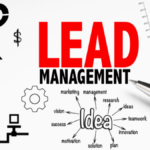In today’s fast-paced business world, managing hundreds of clients can quickly become overwhelming if you’re not organized. Whether you’re a freelancer, consultant, agency owner, or part of a customer-facing team, staying organized is the key to maintaining professionalism, efficiency, and trust. This comprehensive guide walks you through proven strategies, tools, and habits that will help you stay on top of client interactions, deadlines, and deliverables without burning out.
Why Client Organization Matters
Maintaining Professionalism
Being disorganized can lead to missed meetings, forgotten follow-ups, and delayed responses—all of which negatively impact your reputation. Staying organized helps you present yourself as a reliable, competent professional.
Maximizing Productivity
With an efficient system, you can accomplish more in less time. You won’t waste precious hours hunting down emails or scrambling for client documents.
Improving Client Relationships
Well-organized professionals are better at nurturing long-term client relationships because they stay proactive in communication and delivery.
Building a Client Organization System
The foundation of staying organized with hundreds of clients lies in establishing a solid system. Here’s how to build one.
Centralize Client Information
Create a single, unified database for all client data. This can be a CRM (Customer Relationship Management) tool or even a well-structured spreadsheet.
- Include details like:
- Contact information
- Project status
- Billing info
- Meeting notes
- Communication history
Tools to use:
- HubSpot CRM
- Zoho CRM
- Airtable
- Notion (with custom databases)
Segment Your Clients
Not every client needs the same level of attention. Segmenting clients allows you to prioritize efforts efficiently.
- Types of segmentation:
- High-value vs. low-value clients
- New vs. recurring clients
- Project-based vs. retainer-based clients
Benefits:
- Targeted communication
- Focused follow-ups
- Efficient task delegation
Digital Tools to Supercharge Organization
Use a CRM System
CRM platforms help you manage client relationships at scale. They allow for task scheduling, reminders, deal tracking, and reporting.
Popular CRM features:
- Automated email workflows
- Client tagging and filters
- Appointment scheduling
- Notes and activity tracking
Project Management Tools
Use project management software to track deliverables and deadlines. Assign tasks to team members and monitor progress.
Recommended tools:
- Trello
- Asana
- ClickUp
- Monday.com
Tips:
- Create a board or workspace per client
- Set milestones for recurring projects
- Use automation rules to reduce manual updates
Email and Calendar Integration
Integrate your CRM and project management tools with your email and calendar. This ensures all appointments, calls, and deadlines are visible in one place.
Tools:
- Google Workspace
- Microsoft Outlook
- Calendly
- Zapier (for automation)
Mastering Communication Management
Schedule Regular Check-ins
Establish a routine for client updates. Weekly, biweekly, or monthly calls ensure alignment and prevent last-minute surprises.
How to implement:
- Use recurring calendar invites
- Send reminders via email 24 hours before
- Keep meetings short and goal-oriented
Automate Repetitive Communication
If you send the same types of messages frequently, create templates or automate the process.
Tools:
- Gmail templates
- Mailchimp
- ActiveCampaign
- TextExpander
Examples:
- Onboarding messages
- Payment reminders
- Project status updates
Organizing Files and Documentation
Cloud-Based File Storage
Use cloud storage systems to manage and share documents securely.
Top choices:
- Google Drive
- Dropbox
- OneDrive
Best practices:
- Create folders by client and project
- Use clear naming conventions
- Set permissions carefully
Version Control
Avoid confusion with multiple versions of the same file by using version control strategies.
How to manage:
- Date-stamp all files (e.g., “Proposal_ClientABC_2025-07-30.pdf”)
- Use commenting features instead of editing directly
- Archive outdated versions to avoid clutter
Managing Deadlines and Tasks
Task Batching and Time Blocking
Group similar tasks and block time on your calendar to handle them in batches.
Examples:
- Mondays: Proposal writing
- Tuesdays: Follow-ups and client check-ins
- Fridays: Invoicing and reporting
Tools:
- Google Calendar with color-coded blocks
- Time-tracking apps like Toggl or Clockify
Set Priorities with the Eisenhower Matrix
Divide your task list into:
- Urgent and important
- Important but not urgent
- Urgent but not important
- Neither urgent nor important
This helps reduce overwhelm and focus on what truly matters.
Delegating and Team Collaboration
Build a Reliable Team
If you’re handling hundreds of clients, chances are you need help. A trusted team ensures that you don’t carry the entire burden alone.
Steps:
- Hire virtual assistants or specialists
- Define clear roles and responsibilities
- Use team collaboration tools
Suggested tools:
- Slack
- Microsoft Teams
- Loom for video instructions
Document Standard Operating Procedures (SOPs)
Document how tasks are handled so that team members can follow processes without needing constant supervision.
What to include:
- Client onboarding steps
- Email response guidelines
- File naming conventions
- Escalation processes
Tracking Progress and Measuring Performance
Use Dashboards and KPIs
Monitor how well you’re managing your client load by tracking key performance indicators (KPIs).
Useful KPIs:
- Client satisfaction score
- Project completion rate
- Average response time
- Number of overdue tasks
Tools:
- Google Data Studio
- Excel dashboards
- CRM analytics
Regular Review and Optimization
Set a monthly or quarterly schedule to review your organizational system. Identify what’s working and what needs improvement.
Checklist:
- Are deadlines being missed?
- Are client communications lagging?
- Are files easy to locate?
- Are tools integrated effectively?
Healthy Habits for Long-Term Organization
Start and End Your Day with a Plan
Spend the first 10–15 minutes of your day reviewing your schedule and the last 10 minutes wrapping up.
Morning checklist:
- Review tasks
- Prioritize clients
- Check email
Evening checklist:
- Update CRM
- Log notes
- Prep for next day
Limit Multitasking
Context switching kills productivity. Focus on one task or client at a time and complete it fully before moving to the next.
Common Mistakes to Avoid
Relying Only on Memory
Don’t assume you’ll remember everything. Document client requests, meeting notes, and deadlines immediately.
Using Too Many Tools
Using 10 different apps for 10 different purposes can create chaos. Stick to a consolidated tool stack.
Ignoring Client Feedback
If clients say you’re slow to respond or forgetful, take it seriously. Use their feedback to refine your system.
Conclusion
Staying organized when handling hundreds of clients isn’t just about surviving—it’s about thriving. By using the right tools, setting up smart systems, and maintaining consistent habits, you can efficiently manage your workload while delivering excellent service. As your client base grows, continuously review and refine your processes to stay one step ahead. Organization isn’t a one-time task; it’s a long-term strategy that separates overwhelmed professionals from industry leaders.
Frequently Asked Questions (FAQs)
What is the best tool to organize client information?
A CRM (Customer Relationship Management) tool like HubSpot or Zoho CRM is ideal for organizing client information because it centralizes contact details, communication history, and deal tracking in one place.
How do I manage follow-ups with so many clients?
Use calendar reminders and automated email sequences. CRMs often allow you to schedule follow-ups and get notified when it’s time to check in with a client.
What should I do if I start to feel overwhelmed?
Re-evaluate your workload. Consider hiring a virtual assistant or delegating tasks to a team. Also, revisit your task prioritization strategy and eliminate unnecessary activities.
Is email still a good way to manage clients?
Yes, but only if it’s integrated with your CRM or task management system. Standalone email inboxes can quickly become unmanageable without automation and categorization.
How often should I review my organizational system?
Review your system monthly or at least quarterly. Set aside time to check what’s working, what’s not, and where bottlenecks are forming.



